Ian Chappell column: Australia’s Boxing Day Test horror show started with Frankenstein pitch
Far from being a road, the MCG pitch was the weirdest thing witnessed since Frankenstein. But the mayhem only commenced with the arrival of Australia’s weakened batting line-up.
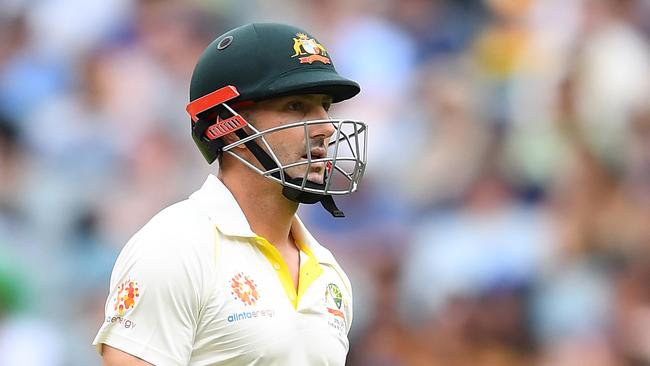
Cricket
Don't miss out on the headlines from Cricket. Followed categories will be added to My News.
What a pitch the MCG provided — the weirdest thing I’ve witnessed since the Frankenstein monster crossed our screens.
For two days it looked like a repeat of the strip for last summer’s Ashes Test that produced a lifeless draw with batsmen ruling the roost. At that point it appeared to be pitch two — bowlers nil.
Then all of a sudden the pitch took on the character of an underground resistance fighter; stealthily creeping up to claim multiple unsuspecting victims.
MORE CRICKET NEWS
COMEBACK: Failures expose dire need for Warner’s return
PRIDE: Cricket star’s ‘28 hours of pain’ for enormous tattoo
The mayhem only commenced with the arrival at the crease of Australia’s weakened batting line-up. The ensuing collapse confirmed the worst fears that this is an extremely fragile group; it was hard to distinguish between batting incompetence and any vagaries in the pitch.
However the collapse did confirm one thing. Despite all the controversy over further revelations about the Cape Town ball tampering saga, Steve Smith and David Warner should be welcomed back into the team with open arms.
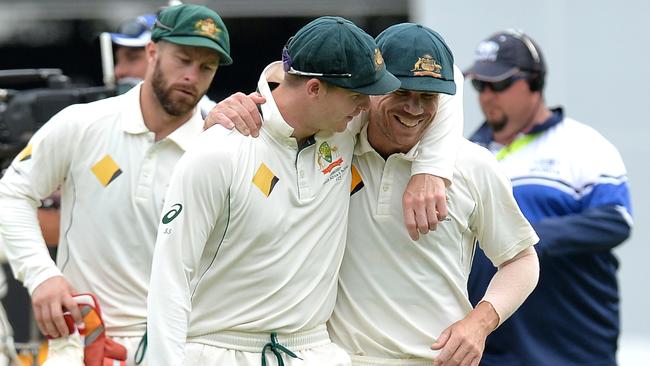
MORE CRICKET NEWS
CLOSE: Cummins’ luck runs out with hat-trick on offer
PLEA: Don’t quit on Finch, says coach
After Cameron Bancroft fingered Warner as the architect of the ball-tampering episode, many said that the left-hander’s presence in the team would be untenable. Anyone who thinks there were only three people involved in the conspiracy still believes in Santa Claus.
The Australian team was warned early in the South African tour that the television cameras would be trained on them as it was felt they were altering the state of the ball.
The Australian response to the warning indicated that they “were only doing what South Africa was doing.”
The Cape Town Test was the third of the series and came well after that initial warning.
Sure, Warner was guilty but there were many other culprits.
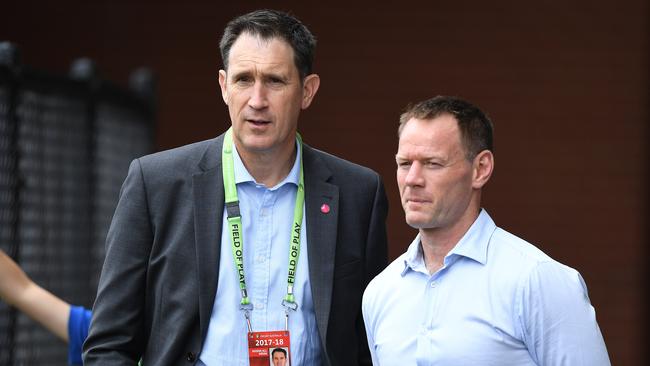
MORE CRICKET NEWS
CASH MONEY: Cummins in line for big payday
CRADDOCK: Who else knew? Cricket’s eternal mystery
Then Smith’s revelation followed, explaining that after Australia’s abject failure in 2016-17 against South Africa at Bellerive Oval, the edict came from James Sutherland and Pat Howard; “We don’t pay you to play, we pay you to win”.
That comment displays an appalling lack of understanding of cricketers and the game. Unless a cricketer is a fixer he’s always trying to win.
That wasn’t the first time this sentiment was explicitly expressed to an Australian team.
A strong leader wouldn’t have interpreted this as an open invitation to adopt “a win at all costs culture.
However Smith showed with his statement; “I don’t want to know about it,” when confronted by the sight of Warner and Bancroft plotting the sandpaper episode, that he wasn’t a strong enough leader.
In that decisive moment Smith should’ve been stronger.
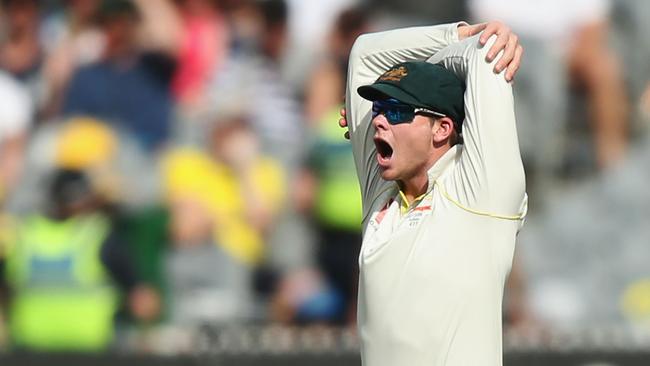
MORE CRICKET NEWS
SHUT CASE: CA close book on ball tampering affair
ZERO TOLERANCE: MCG fans warned after vile chants
Nevertheless throughout cricket’s history it’s been players who pay the price after the administrators make a blunder.
There’s no doubt that reintegrating the suspended players is going to take the skills of a diplomat and Tim Paine’s level-headed leadership will be tested to the full. What is also not in doubt is the line-up can’t do without Smith and Warner.
The fragility of the Australian batting line-up is in danger of squandering the brilliance of their top-class bowling attack. The brittleness of the top order was amply displayed at the MCG where the longest enduring first innings partnership was between Paine and the ever-optimistic Pat Cummins.
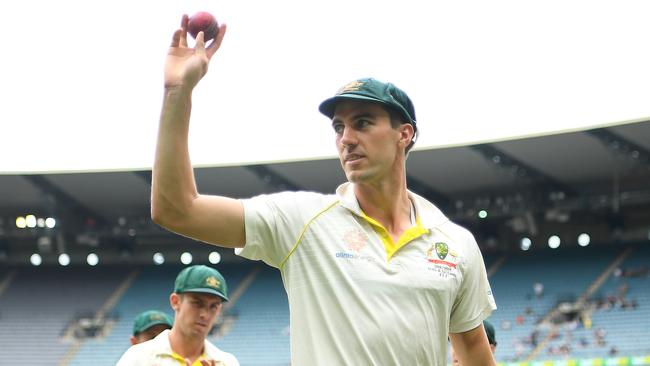
Cummins then lifted Australia’s spirits after Virat Kohli had looked to bury the opposing fast bowlers by not enforcing the follow-on. The downside of this manoeuvre is a second innings collapse that then sucks away the momentum that has been gained from a hard-earned first innings lead.
A psychological advantage is not to be sniffed at in a Test match. India sacrificed a golden chance to head to the SCG well ahead in that department by not going for the kill when Australia was down.
Australia’s euphoria from Cummins’ destruction of the Indian second innings didn’t last long. Wickets again tumbled at regular intervals in Australia’s second innings and the selectors are now faced with a nightmarish meeting before the SCG Test.
Not only do they need to find batsmen who can do better — a difficult enough task — but they also have to achieve this feat when players have only the BBL Twenty20 competition to impress.
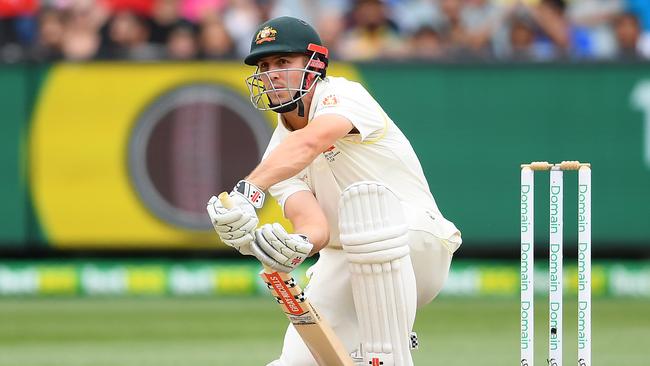
There are currently two batsmen — Aaron Finch and Mitch Marsh — in the line-up who deserve to be replaced.
No matter what the rest of the world thinks I’ll bet the selectors wish they could write in the names Smith and Warner as the replacement batsmen.
Every Test, ODI & T20I live, ad-break free during play and in 4K. Only on Foxtel. SIGN UP NOW!
Originally published as Ian Chappell column: Australia’s Boxing Day Test horror show started with Frankenstein pitch


